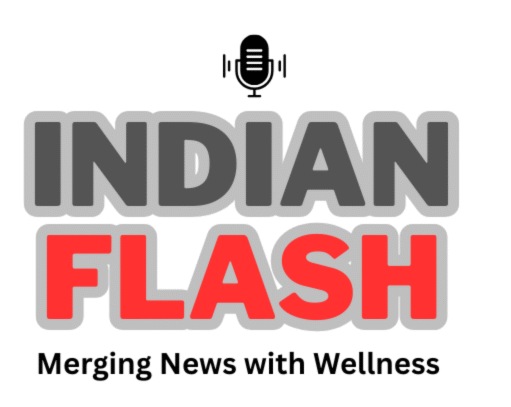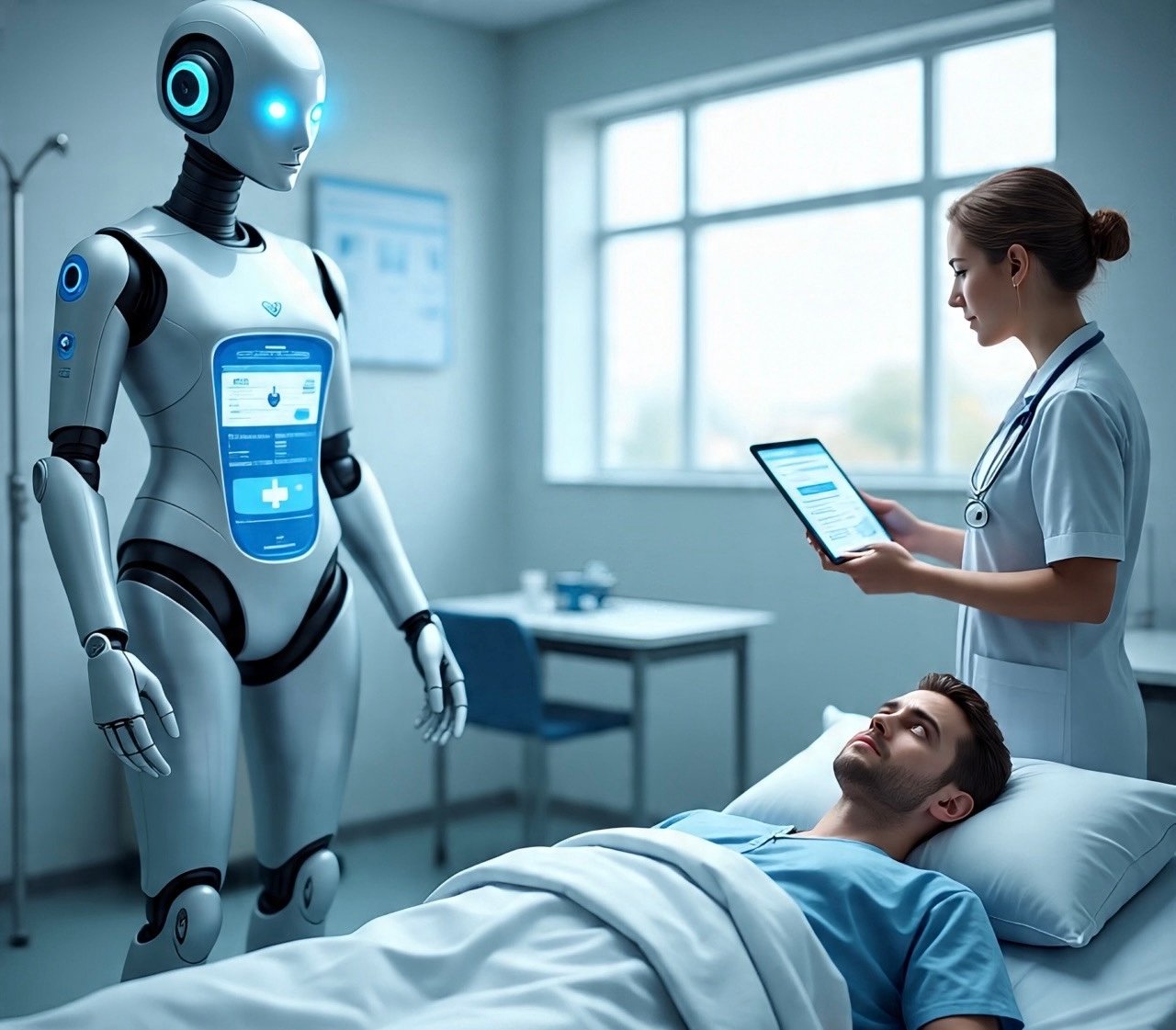From faster stroke diagnosis to AI scribes that cut paperwork, see how AI is reshaping global healthcare—benefits, risks, and what’s next.
Healthcare systems everywhere face staff shortages, rising chronic disease, and data overload. AI tools are stepping in—to flag stroke on CT scans in minutes, help read mammograms at scale, draft visit notes automatically, and support care in low-resource settings. Adoption is rising fast, but so are concerns around safety, bias, privacy, and regulation. Here’s what you need to know now.
Q&A Deep Dive
Q1. What do we mean by “AI in healthcare”?
“AI in healthcare” covers machine learning, deep learning, natural language processing (NLP), computer vision, and large multimodal models that perform or assist with diagnosis, risk prediction, image interpretation, workflow automation, documentation, and even patient self-guidance. Generative and multimodal AI can take in text, images, or audio and generate clinical drafts, education, or decision support—expanding beyond narrow algorithms toward more conversational, workflow-aware tools.
Q2. Why is AI gaining momentum in healthcare right now?
Three forces are converging: (1) Workforce strain & physician burnout—AI scribes and automation reduce paperwork; (2) Data growth from digital records & imaging—fertile ground for pattern recognition; (3) Regulators & global health bodies issuing guidance, clearing a path for safer adoption. Emerging economic analyses also show AI can speed time-critical care (e.g., stroke) and improve system efficiency.
Q3. What are today’s highest-impact AI use cases in clinical care?
1.
Emergency Imaging & Stroke Care
AI platforms can rapidly analyze CT scans to flag large vessel occlusion (LVO) stroke, alert teams, and coordinate transfers—cutting crucial minutes and improving outcomes and hospital economics in real-world data presented at the 2025 International Stroke Conference.
2.
Breast Cancer Screening
From Google/DeepMind research to large NHS trials and commercial AI readers like Kheiron’s Mia, AI has shown potential to maintain or improve cancer detection while reducing radiologist workload—a major issue in national screening programs.
3.
Ambient Clinical Documentation (AI Medical Scribes)
AI listens to clinician-patient conversations (with consent), drafts structured notes, and updates EHRs—saving doctors substantial time and reducing burnout across major U.S. and academic health systems adopting tools such as DAX Copilot, Abridge, and similar platforms. Early validation studies compare AI note quality to human experts.
4.
Global & Emerging-Market Diagnostics (India Example)
Indian startup Qure.ai’s imaging algorithms screen for TB, lung disease, and stroke across multiple geographies, illustrating how cloud-delivered AI can extend specialist capacity in low-resource settings while scaling commercially.
Q4. How is regulation evolving for AI medical tools?
Regulators are shifting from one-time approvals toward “predetermined change control plans” so AI software that learns can update without full re-review every time—outlined in recent FDA recommendations to streamline AI/ML medical device updates. Global health bodies such as WHO are simultaneously publishing ethics & governance frameworks for large multimodal models in health, pushing transparency, post-deployment monitoring, and human oversight. National agencies (e.g., ICMR in India) are issuing domain-specific ethical guidance.
Q5. How does AI ambient listening actually work in the clinic?
Ambient tools capture audio during a visit (often via a mobile app or exam-room microphone), convert speech to text, identify medical concepts, structure them into SOAP or specialty-specific note templates, and send drafts back to the clinician for review/sign-off. Systems can also insert orders, patient instructions, and ICD codes. Early adopters report documentation time dropping from ~90 minutes daily to under 30 and improved face-to-face interaction—though accuracy checks and patient consent remain critical.
Q6. Does AI actually improve speed or outcomes in time-critical disease?
Stroke workflow studies of the Viz.ai platform show meaningful reductions in time from imaging to specialist action and modeled financial benefits when appropriate patients are kept or transferred efficiently; faster treatment correlates with reduced disability burden.
Q7. Can AI reduce imaging backlogs in cancer screening programs?
Large breast screening initiatives (UK NHS trial; Kheiron Mia evaluations; systematic reviews) suggest AI can act as an additional or replacement reader in double-read workflows, preserving cancer detection rates, potentially detecting additional cancers in some cohorts, and cutting radiologist workload by up to ~30% in modeled scenarios. Scaling these tools could help address workforce shortages and post-pandemic backlogs.
Q8. What ethical issues worry global health leaders?
Key concerns include false or biased outputs, data privacy, unclear accountability, automation bias, and unequal access when powerful models are expensive or trained on limited populations. WHO’s guidance for large multimodal models and broader AI ethics publications call for transparency, human rights protections, post-release auditing, and stakeholder oversight across the AI lifecycle.
Q9. What special considerations apply in India and other low-resource settings?
India’s ICMR ethics framework highlights data quality, consent, accountability, and fairness as AI expands across diverse languages and uneven digital infrastructure. Market leaders like Qure.ai demonstrate global reach but also show that local validation and policy support are needed to drive adoption where specialist access is limited.
Q10. Advantages of AI in Healthcare
Speed & Timely Intervention: Rapid triage in stroke, automated reads of high-volume imaging, and quicker documentation free clinicians for patient care.
Workforce Relief & Burnout Reduction: AI scribes and assistive tools reduce after-hours charting and repetitive tasks; early surveys show improved clinician experience.
Scalability Across Sites: Cloud AI lets hospitals without in-house specialists access expert-level analysis (imaging, ECG, risk scoring), a major benefit in emerging markets.
Potential for Better Detection Rates: Breast screening AI has matched or improved detection in evaluation studies while maintaining recall performance, helping programs manage volume.
Q11. Limitations & Risks
Data Privacy & Security: Sensitive audio, imaging, and record data flow through vendor platforms; requires strong governance and explicit patient consent.
Algorithm Bias & Generalizability: Models trained on narrow datasets may misclassify underrepresented groups; WHO and ICMR stress diverse, well-labeled data.
Regulatory Uncertainty & Liability: When AI influences clinical decisions, responsibility for errors can be unclear; evolving FDA and national guidance aim to clarify update pathways and oversight.
Workflow Integration Gaps: Without deep EHR integration and clinician training, AI scribes or imaging tools can add friction instead of saving time.
Q12. Practical Checklist for Hospitals Considering AI Tools
1. Define Use Case & Metrics: Start where measurable pain exists (documentation burden, stroke door-to-treatment delays, imaging backlog). Gather baseline metrics.
2. Demand Evidence: Ask vendors for peer-reviewed or real-world performance data relevant to your patient mix; note population differences (e.g., Qure.ai’s global deployments).
3. Confirm Regulatory Path & Update Handling: Understand device clearance class, how algorithm updates are governed, and whether future changes require re-validation under FDA-style adaptive pathways.
4. Address Data Governance & Consent: Align contracts with WHO/ICMR ethical expectations—data minimization, audit trails, breach response, patient notification.
5. Pilot, Train, Iterate: Begin with limited clinical pilots, collect feedback, compare AI vs. human output quality (see recent scribe note evaluation methods), and scale gradually.
Q13. What’s Coming Next? (Future Trends to Watch)
- Multimodal Assistants: Text + image + audio models powering unified clinical copilots across triage, imaging review, and documentation.
- Scaled National Screening Trials: Large datasets (e.g., NHS mammography megatrial) will provide definitive evidence on AI’s role in population programs.
- Adaptive Regulated Software: Expect more “living” algorithms under streamlined FDA and similar frameworks that permit controlled performance updates.
- Global Expansion From Emerging-Market Innovators: Firms like Qure.ai show how solutions validated in resource-constrained settings can scale internationally, influencing pricing and access.
FAQ (Add Structured FAQ Schema Below the Article)
Q1. Is AI replacing doctors?
No. Current systems assist—flagging findings, drafting notes, or prioritizing cases—while final clinical decisions remain with licensed professionals under ethical and regulatory oversight.
Q2. Are AI diagnostic tools already used in hospitals?
Yes. Stroke triage (Viz.ai), breast screening readers in NHS trials, and commercial deployments in multiple health systems show active clinical use—often as decision support, not stand-alone diagnosis.
Q3. Do AI scribes really save time?
Early adopters report large documentation time cuts and better eye contact with patients; comparative note-quality research shows AI drafts approaching human quality when reviewed by clinicians.
Q4. What safeguards protect my data?
International guidance (WHO) and national frameworks (ICMR in India) call for informed consent, secure data handling, audit trails, and human oversight; ask your provider which policies apply.
Q5. Can AI improve cancer detection?
Large studies in breast screening programs show AI can match or improve detection rates and reduce workload when used as an additional or replacement reader—evidence is growing but program-level validation is ongoing.




